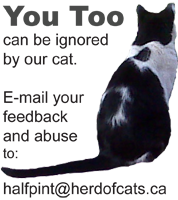You are hereProject Retirement, ep 10
Project Retirement, ep 10
The one where we drift towards the rocks.
As you know, I passed my Basic Costal Navigation certification. That's where I try to plot my course and then try to track the boat via dead-reckoning. Stormblade thinks I should call it "suicide-reckoning". As I previously said, you can basically pass the class if you can do simple math and remember "True <-> Variation <-> Magnetic <-> Deviation <-> Compass". I'm not saying it's easy, but that if you can't get the TVMDC mantra figured out before you head out on the boat, you might as well just aim for that lighthouse over there and get it over with. One day your GPS will fail, and without Basic Coastal Navigation, you will basically be SOL. To bring it home, I have a friend that has been skipper for hundreds of charters, and has told me "the last 2 times I chartered, it took all of 10 minutes before the chartplotter up and died, and we were out for a solid week each time". Get paper charts, a good compass, and a pencil.
The next level course is Intermediate Costal Navigation. This course is not necessary to get your Bareboat Skipper Certification, but I think it should be required, to be honest. *Especially* if you sail the St-Lawrence between Montreal and Gaspe, and/or you sail in oceans far away from the equator. The Intermediate Coastal Navigation course is all about currents and tides. Current can seriously harsh your day by bringing you miles from where you thought you were. Tides can run you aground and then proceed to puree your boat into splinters while tourists take pictures.
This course shows you two more methods of "getting a fix"; that's where you aim your hand-held compass out and take a bearing on some shore or lighthouse and figure out a "line of position" on your chart. You do that twice on two different objects you have on your chart, and voila, you have a real point of position to put on paper. One new method is the running fix, where you can take a bearing on that one object, wait a while, and then take another bearing on it, and using a ruler and some smarts you get a "fixed position" using just that one object.
You also learn how to calculate how the current is affecting you. That's is called the "set" (the direction of the current) and the "drift" (the speed of the current). Knowing this can help save your a$$ if you are close to a shore and it is foggy or windy or rainy, etc... Even a 1 mile per hour current can, over time, put you miles from where you think you are and on a long crossing you may end up at the wrong end of a large island, or even a different island! This happens to MANY people just crossing from Florida to the Caribbeans. It is a classical situation where a new sailor starts from Miami aiming straight east to get to South Bimini, hoping to get there in a few hours (it's 79 kilometers away), and instead, because of the permanent Gulf Steam current, end up many many hours later in Freeport, which is 168 kilometers away. A GPS will not help you here. The GPS will happily let you know that even if you are facing east, you are in fact going north, fast.
And then there's tides. Tides will kill you. The further you go from the equator, the bigger the difference between the low water mark of a tide, and the high water mark of a tide. The moon, that harlot, is responsible. Tides are commonly semi-diurnal (two high waters and two low waters each day), and if the moon is in your sky while a high tide happens, you can even get a "high high tide" and a "low low tide" if the moon is on the exact opposite side of the earth to you. So, off you go to get to that nice marina in Nova Scotia, without looking at your watch, and you see on your charts that it's all 10 feet of water under you until you get to your nice marina. Nova Scotia are tides roughly 11 feet of tide difference, with some places having a 53 feet of tide difference (like the Minas Basin). That nice "10 feet of water" marker on your chart has some serious possibility of being "0 feet of water" for quite a number of hours. If you have a 4 foot keel under your boat and you pass an area with a rocky bottom that is *supposed* to have a good 8 feet of water on your chart, and you do so on a dropping tide that remove 5 feet of water from that area. You will run aground. On rock. Where you will look stupid for the next 5 hours. When the water comes back, it will push your boat on that nice rocky bottom like a piece of cheddar on a grater.
So, yeah, important things to learn, I think.
-

- Login to post comments
- 1390 reads








